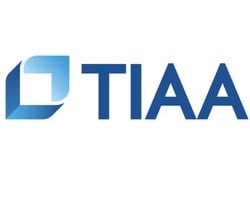As a company rapidly grows, it can be an exhilarating and stressful time for all departments, including HR. It’s beneficial to maintain a sense of order without installing overly bureaucratic systems and rules. With longstanding employees stepping into new roles and new hires forming brand new departments or branches, old HR processes and policies often need to change. Small businesses have ways of managing employees and dealing with HR functions in ways that don’t work when they get larger.
So what kinds of knowledge and strategies do HR managers need to help their company sail successfully through a growth period?
PREPARING FOR CHANGE
To prepare for rapid growth, HR leaders should consider specific challenges that are likely to emerge. For example, try to anticipate and prevent communication gaps and miscommunication. Devise a schedule for performance reviews and regular updates on the ongoing changes (via emails and in-person meetings).
When you have plenty of chaos to handle and new responsibilities to master, it is easy to neglect the underpinnings of internal communication, such as performance reviews and regular staff meetings. But don’t make that mistake. It’s harmful to workforce morale and productivity if employees feel like they don’t know what is going on and don’t know what is expected of them anymore. Be very clear about roles and responsibilities throughout the period of growth.
Take a good look at your industry and consider whether a certain amount of growth will make your company face a different set of competitors, not only for customers and sales, but also for attracting and retaining the best employees. What can be done to prepare for that situation? The answer is different for each organization. Some might need to increase salary and benefit levels to remain competitive. Others might need to add new paid leave policies, training programs or opportunities for continuing education.
Before a big growth streak, make sure you have accurate, reliable data on important factors like recruiting success, retention rates, employee job satisfaction and productivity. Establishing a baseline will help you understand the expansion’s true impact on the workforce.
Carefully look at the skill sets and experience of current employees to see where any extra job training might be needed. Especially consider leadership training for longtime employees as they take on supervisory or leadership roles for the first time.
NAVIGATING RAPID GROWTH
Management should establish a system for receiving employee feedback that is informal, easy and frequent. Doing casual lunch or coffee meetings, one-on-one, can be helpful. You want to hear about challenges and problems related to the ongoing changes before they become widespread and much harder to solve. Celebrating accomplishments and progress is important, as well.
Amid changes that can feel chaotic, be compassionate, respectful and understanding so employees feel they are treated like humans and not just resources. When employees feel they are respected by their colleagues and management, they will have a much greater resiliency in response to the everyday challenges and unexpected bumps in the road.
Connect employees to the organization’s mission and why their work matters so they feel they are contributing to something important. This message often works best in person, but it can also be a part of emails, personnel handbooks and other tools for internal communication.
This is also a good time to pay close attention to company culture, including the habits that top leaders are modeling and spreading. It’s not uncommon for small companies with high employee satisfaction to find their culture is muddled or lost after they become a much larger entity. Being more deliberate and intentional about nurturing the company culture can help to avoid that outcome.




